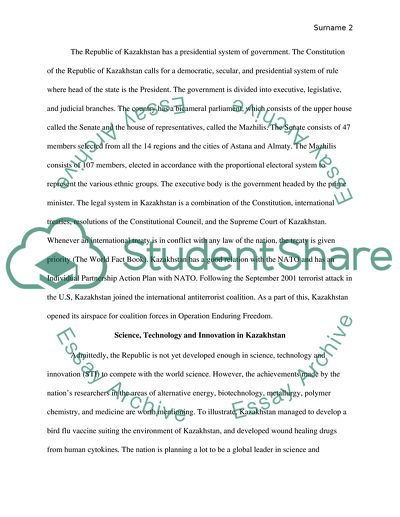Cite this document
(Country Profile of Kazakhstan Essay Example | Topics and Well Written Essays - 3000 words, n.d.)
Country Profile of Kazakhstan Essay Example | Topics and Well Written Essays - 3000 words. Retrieved from https://studentshare.org/politics/1845480-country-profile-kazakhstan
Country Profile of Kazakhstan Essay Example | Topics and Well Written Essays - 3000 words. Retrieved from https://studentshare.org/politics/1845480-country-profile-kazakhstan
(Country Profile of Kazakhstan Essay Example | Topics and Well Written Essays - 3000 Words)
Country Profile of Kazakhstan Essay Example | Topics and Well Written Essays - 3000 Words. https://studentshare.org/politics/1845480-country-profile-kazakhstan.
Country Profile of Kazakhstan Essay Example | Topics and Well Written Essays - 3000 Words. https://studentshare.org/politics/1845480-country-profile-kazakhstan.
“Country Profile of Kazakhstan Essay Example | Topics and Well Written Essays - 3000 Words”, n.d. https://studentshare.org/politics/1845480-country-profile-kazakhstan.


